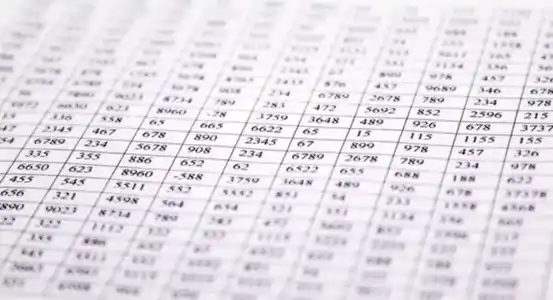Overview
Chart of Accounts serves as a basis for the whole accounting process. It is a place where bookkeepers list all the account titles that they have access to and can use for recording various business transactions in the company’s books of accounts. Despite being relatively simple, it is important that you have a well-built and clean chart of accounts because otherwise, the whole system will not be able to sustain itself.
Once you have posted all the transactions to the journal, it is time to move those transactions from the journal to the general ledger. To do that, you need to give all the accounts, such as Revenue, Inventory, and Accounts Receivable, a specific description. In the accounting world, you do that with a number.
Numbering System
With all the accounting rules and requirements on how various reports should look like, it might seem that there is a specific Chart of Accounts that every business has to use for keeping track of its transactions. This is not so, though.
Although there is some similarity, especially among businesses that do similar type of activity, every business creates a Chart of accounts that is tailored specifically for its operations, needs, preferences, and so on. For instance, manufacturing companies have accounts that resellers do not need to have in their Chart of Accounts. Non-profit organizations will also have a completely different set of accounts in their Chart of Accounts.
Despite the fact that the Chart of Accounts are different for every business, as you are creating one for your business, there is a specific order that these accounts are listed. As was mentioned earlier, each account in the Chart of Accounts is assigned a unique number that bookkeepers use to identify the accounts and transactions recorded in them and organize all these accounts. This is better known as an account number and each account has a respective number, similarly to every person having a social security number or every student having a student ID number.
Typically, each account number consists of two or more digits that tell something about the account. You will see that for smaller companies, this will be a three-digit number, and the bigger the company the larger the numbers will be.
Usually, you will see the first number (or two) representing the general ledger division and being a major classification. Accordingly, numbers starting from 1 are assigned to Asset accounts, numbers starting from 2 are assigned to Liability accounts, numbers starting from 3 represent Stockholder’s Equity accounts.
Revenues and Expenses will also have their own numbers and, if necessary, the company can have numbers starting from 6, 7, and so on assigned to other account types. Larger companies, for example, usually have separate numbers for Cost of Goods Sold and due to a large number of expenses, they often need more than one number to be able to have enough numbers for all the Expense accounts.
The next two numbers represent a sub-classification, which is typically a location within the general ledger division or the order in which these accounts are listed within their division. These numbers are going to start off by tens, which allows the bookkeeper to add something if needed later on. The last number(s) represents the account name.
For instance, an account with a number 124 can be assigned to an Equipment account, where 1 stands for asset accounts, 2 stands for long-term asset accounts, and 4 stands for the actual Equipment account. A Salaries Payable account can be assigned a number 214, where 2 stands for liabilities, 1 stands for current liabilities and 4 stands for the Salaries Payable account.
Why Use Numbering?
Let’s try to figure out some of the reasons some businesses find using the numbering system to be helpful for their work. Now that you know how the numbers are assigned to each account, it is very simple to find a specific account and know where a specific transaction or account stands in the whole accounting system.
Numbering becomes especially crucial as the business grows and the number of accounts can easily add up to hundreds of bookkeeping accounts. It makes it simple for managers to analyze the financial reports prepared with the numbers included in them.
Although this whole Chart of Accounts numbering system seems complicated at first, remember that you need to do it only once. Once you set it up, you have something like numbered shelves where you will just place your transactions and can easily retrieve the information on any of them whenever you need it. It also makes the whole picture a lot clearer and easier to understand.
Over time, bookkeepers get used to having numbers for each and every account and memorize their numbers. You would at least know that every asset, for example, begins with number 1 and every revenue begins with number 4.
Nonetheless, the choice of whether you want to use this numbering system or not depends on your preferences. If you are not sure how to go about correctly setting up your Chart of Accounts, we suggest seeking professional help to ensure that you have a strong foundation for your business accounting. Keep in mind the important role this business function plays in the overall success of your company.


















